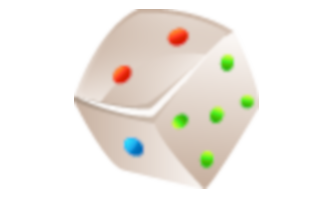Mollusks, Arthropods and Echinoderms
Life Science - Middle School
Six Kingdoms of Life
Multimedia Lesson

Classification
Presentation

Six Kingdoms Overview
Presentation

Animals
Presentation

Classifying Organisms
Virtual Lab

Kingdom Identification
Interactive

Mollusks, Arthropods and Echinoderms
Study Guide

Mollusks, Arthropods and Echinoderms
Quiz

Mollusks, Arthropods and Echinoderms
Flash Cards

Mollusks, Arthropods and Echinoderms
Worksheet

Mollusks, Arthropods and Echinoderms
Game

Mollusks, Arthropods and Echinoderms
Vocabulary List

Invertebrates
Flip Chart

Animal Life Cycles
Flip Chart

Mollusks, Arthropods & Echinoderms
Flip Chart

Mollusks, Arthropods & Echinoderms
Flip Chart

Study Guide Mollusks, Arthropods and Echinoderms
❮
1
/
7
❯
MOLLUSKS, ARTHROPODS AND ECHINODERMS Characteristics of Mollusks A mollusk is an invertebrate that has an un-segmented, soft body that is almost always protected by outer shells. Snails, octopuses, clams, and oysters are all species of mollusks. Mollusks also have a thin layer of tissue that covers their internal organs called a mantle. The shells of mollusks are usually made by the mantle. Movement The majority of mollusks also have a structure called a foot, which helps them move around their environment. Structure Mollusks have bilateral symmetry and internal organs that are located in one area. Some of the internal organs include a stomach, heart, reproductive organs, and a pair of kidneys. Foot © Copyright NewPath Learning. All Rights Reserved. Permission is granted for the purchaser to print copies for non-commercial educational purposes only. Visit us at www.NewPathLearning.com.
The kidneys are organs that eliminate wastes produced by the cells. Most mollusks that live in a water environment have gills. Gills are organs that take oxygen out of water. The gills have a large supply of blood vessels that allow oxygen to diffuse across their membrane and carbon dioxide to diffuse out of the mollusk. Mollusks also have an organ called a radula. The radula is a structure that is bendable and is covered in small teeth. Mollusks use the radula to draw in food and to tear it into pieces they can digest. Lesson Checkpoint: What is the function of the radula in a mollusk? Three Major Groups of Mollusks Scientists classify mollusks into groups based on the presence of a shell, the type of shell, the type of nervous system, the type of radula, and the function of the foot. These characteristics help to place each species of mollusk into three major groups: Gastropods, cephalopods, and bivalves. Gastropods The gastropods are the most abundant of the mollusks, which include snails and slugs. These mollusks have no shell or a single shell. Snails have a single shell and slugs do not have a shell at all. A gastropod has sense organs located in the head and a muscular foot that helps it to move around. The stomach of a gastropod is on the same side of the body as the foot, which is how gastropods got their name. © Copyright NewPath Learning. All Rights Reserved. Permission is granted for the purchaser to print copies for non-commercial educational purposes only. Visit us at www.NewPathLearning.com.
How Gastropods Avoid Predators When the conditions are dry or there is a predator nearby, gastropods with shells will retreat into their shells. Some gastropods have a structure called a trapdoor that will close once the gastropod retreats into its shell. This seals the gastropod inside the shell until the threat is gone. Gastropods feed in many different ways. They are herbivores, omnivores and carnivores. The Bivalve The second major group of mollusks is the bivalve, which are mollusks with two shells that are held together by a hinge and secured by very strong muscles. Species of bivalves include oysters, clams, and mussels. Bivalves are a unique mollusk because they are filter feeders and they do not have a radula. Cephalopods The third and last major group of mollusks is the cephalopods. Cephalopods are mollusks that adapted their feet into tentacles that surround their mouth. Examples of cephalopods include octopus, squid, cuttlefish, and the nautilus. The shells of the cephalopod species vary from not having a shell, having a small internal shell, to having an external shell. They catch food with their tentacles, which have suckers on them that are sensitive to smell and touch. Cephalopods have the largest brain of the invertebrates which allows them to have excellent vision and the ability to learn from their environment. Lesson Checkpoint: What type of mollusk is a nautilus shell? © Copyright NewPath Learning. All Rights Reserved. Permission is granted for the purchaser to print copies for non-commercial educational purposes only. Visit us at www.NewPathLearning.com.
Arthropods Arthropods are invertebrates with external skeletons, segmented bodies, and appendages. Appendages are structures that are jointed and attached to the body. Most arthropods reproduce sexually and are either male or female, have an open circulatory system, and have internal fertilization. An open circulatory system is when the blood leaves the blood vessels and bathes the internal organs within the body. Internal fertilization is when the sperm and egg meet inside the body. Arthropods have a waterproof outer covering called an exoskeleton. The exoskeleton prevents water from evaporating and protects them from predators. The exoskeleton is made up of a material known as chitin. The exoskeleton of an arthropod is unable to grow as the organism grows larger. What if the arthropod outgrows its exoskeleton? In a process known as molting, an arthropod will shed its exoskeleton and grow a new, larger exoskeleton that will fit the growing organism. Molting leaves the organism in danger for a period until the chitin hardens. Some arthropods have segments. The segmented bodies of centipedes and millipedes are very visible. Other arthropods that have segments are lobster and crawfish. The segmented area is the back portion of the organism. The jointed appendages of arthropods give them flexibility and a better ability to move. Appendages are also adapted to be used as tools that help the organisms feed on their prey. The appendages known as antenna are adapted to pick up information from the organism’s environment, like smell, taste, balance, and touch. Lesson Checkpoint: What does an arthropod do if it outgrows its exoskeleton? © Copyright NewPath Learning. All Rights Reserved. Permission is granted for the purchaser to print copies for non-commercial educational purposes only. Visit us at www.NewPathLearning.com.
Five Major Groups of Arthropods There are five major groups of arthropods: arachnids, centipedes, millipedes, crustaceans, and insects. Arachnids: An arachnid is an arthropod that has two body segments, the first being the head and chest and the second being the abdomen. The abdomen contains the part of the digestive tract and the reproductive organs. Arachnids do not have antenna, have eight legs, and breathe through lungs that are attached to openings on the exoskeleton. Mites, scorpions, spiders, and ticks are all arachnids. Centipedes and Millipedes: The bodies of centipedes and millipedes have a high number of segments. One pair of legs attaches to each segment of a centipede and two pairs of legs are attached to each segment of a millipede. Crustaceans: A crustacean is an arthropod that has three pairs of appendages that are used for chewing food and usually has two or three body segments. Crustaceans also have five or more pairs of legs with one or more pairs attached to each body segment. The larvae of crustaceans develop into adults using a process called metamorphosis. Metamorphosis is a process in which an organism’s body changes dramatically during its overall life cycle. Insects: Insects have a consistent body form between the different species. An insect is an arthropod with usually one or two pairs of wings, six legs, one pair of antenna, and three body sections. The three sections are the head, thorax, and abdomen. The thorax is the middle section that wings are attached too. During an insect’s life, it will undergo one of two different types of metamorphosis. Complete metamorphosis consists of four stages: egg, larva, pupa, and adult. The insect will begin life in a fertilized egg, which will hatch and an insect larva will emerge. After growing dramatically, the larva will enter the third stage called the pupa. During the pupa stage, the larva will be encased in a protective covering where it will develop into the adult form of the insect. © Copyright NewPath Learning. All Rights Reserved. Permission is granted for the purchaser to print copies for non-commercial educational purposes only. Visit us at www.NewPathLearning.com.
Gradual metamorphosis is when the larva appears similar to the adult insect, but goes through a series of molts until it reaches the adult stage. Once the insect hatches, it is called a nymph and it resembles the adult insect. Lesson Checkpoint: How many pairs of legs attach to each segment of a centipede? Echinoderms An echinoderm is an invertebrate that is radially symmetrical and lives on the floor of the ocean. The Endoskeleton An echinoderm has a skeleton that is internal and spiny, called an endoskeleton. Adult echinoderms have radial symmetry that is usually in multiples of five. Examples of echinoderms are sea stars, sea urchins, sand dollars, and sea cucumbers. Echinoderms also have an internal fluid system called a water vascular system. © Copyright NewPath Learning. All Rights Reserved. Permission is granted for the purchaser to print copies for non-commercial educational purposes only. Visit us at www.NewPathLearning.com.
Water Vascular System The water vascular system is a system of tubes within the body where fluids flow to help the animal survive. Parts of the tubes are able to squeeze together forcing the water into structures called tube feet. Tube feet are important because they help the echinoderm move and also capture food. The tube feet are the external portions of the water vascular system. When the tube feet are filled with water they act like suction caps, gripping onto an object. This allows echinoderms to move around and capture food. © Copyright NewPath Learning. All Rights Reserved. Permission is granted for the purchaser to print copies for non-commercial educational purposes only. Visit us at www.NewPathLearning.com.
Table Of Contents: Six Kingdoms of Life
1. Classification
2.1. Why Do Scientists Classify Organisms?
There are millions of types of organisms that live on Earth. A classification system helps scientists study, record and share information about organisms in a systematic and useful way.
2.2. How Are Organisms Classified?
The science of classification is called taxonomy. Organisms are classified according to shared characteristics such as cell structure, physical appearance, how they obtain food and method of reproduction.
2.3. DNA Technology and Classification
DNA technology is also playing a role in classification. The study of gene sequences and mutations has enabled scientists to understand the evolutionary relationships between different organisms.
2.4. Levels of Classification
There are seven levels of classification—kingdom, phylum, class, order, family, genus and species.
2.5. Scientific Name
Each organism is identified by its scientific name, which includes the genus and species. For example, humans are called Homo sapiens.
2. Six Kingdoms Overview
3.1. What Are the Six Kingdoms?
All organisms are classified into six different kingdoms—archaebacteria, eubacteria, protists, fungi, plants and animals.
3.2. Archaebacteria and Eubacteria
From an evolutionary perspective, archaebacteria and eubacteria are the simplest organisms, having evolved billions of years ago.
3.3. Protists
Protists are more complex organisms with a variety of characteristics. Scientists believe that protists evolved from bacteria.
3.4. Fungi, Plants and Animals
Fungi, plants and animals all evolved from different types of protists.
3. Archaebacteria and Eubacteria
4.1. Characteristics of Bacteria
Bacteria are simple unicellular organisms that can be found in nearly every environment on Earth. All bacteria are prokaryotic—they do not have a true nucleus or organelles with membranes.
4.2. Two Bacterial Groups
DNA studies suggest that there are two distinct groups of bacteria. Therefore bacteria are divided into two kingdoms—archaebacteria and eubacteria.
4.3. Where Are Archaebacteria Found?
Some archaebacteria are found in extreme environments, such as hot springs and salt lakes, while other species live in the ocean and soil.
4.4. Where Are Eubacteria Found?
Eubacteria are more common than archaebacteria and are found in soil, water and our bodies.
4.5. Beneficial and Harmful Bacteria
Archaebacteria and eubacteria are diverse kingdoms of organisms that contribute to oxygen production, food production, decomposition, medical applications and biotechnology. Some bacteria are harmful and cause disease.
4. Protists
5.1. Characteristics of Protists
Protists are eukaryotic organisms that have a true nucleus and membrane-bound organelles. They typically live in or near water and can be unicellular or multicellular.
5.2. Variety of Protists
The protist kingdom includes organisms that are not classified as plants, animals or fungi. Protists are difficult to categorize because there is a wide variation of characteristics among species.
5.3. Protist Groups
Protists are often grouped according to whether they are animal-like, plant-like or fungus-like.
5.4. Protozoa
Animal-like protists are known as protozoa. They are single-celled organisms that move to find food. Amoeba and paramecium are classified as protozoa.
5.5. Algae
Plant-like protists, called algae, contain chloroplasts and make their own food by the process of photosynthesis. They are primarily found in fresh water. Examples include volvox, euglena and spirogyra.
5.6. Fungus-Like Protists
Fungus-like protists are heterotrophs that feed on decomposing matter. They reproduce using spores. Water molds, downy mildew and slime molds are fungus-like protists.
5. Pause and Interact
6.1. Review
Use the whiteboard text tool to complete the activity.
6. Fungi
7.1. Characteristics of Fungi
Fungi are heterotrophic eukaryotes that absorb nutrients from decomposing matter. Most are multicellular, but some, like yeast, are unicellular.
7.2. Parts of a Fungus
The bodies of most fungi are composed of filaments called hyphae. These hyphae grow into a large mass of cells called mycelium.
7.3. Fungus Reproduction
Most fungi reproduce using spores. Fungi are classified into three groups according to their sexual reproductive structures—zygote, sac and club fungi.
7.4. Beneficial Fungi
Many fungi are beneficial organisms, contributing to the recycling of nutrients, food production and medical advances.
7.5. Harmful Fungi
There are some fungi that are harmful and cause disease in animals and plants.
7. Plants
8.1. Plant Characteristics
Plants are multicellular eukaryotes that live primarily on land. They are autotrophic, obtaining energy through photosynthesis.
8.2. Cellulose and Chloroplasts
Plant cells are distinct because they have cell walls composed of cellulose. Chloroplasts inside the cells contain the pigment chlorophyll that is needed for photosynthesis.
8.3. How Are Plants Classified?
Plants are classified according to whether they have vascular systems, produce seeds and develop flowers.
8.4. Nonvascular Plants
Nonvascular plants absorb water and nutrients directly from their surroundings. They are seedless and are considered to be the most ancient land plants. Examples include liverworts, mosses and hornworts.
8.5. Seedless Vascular Plants
Ferns, club mosses and horsetails are seedless vascular plants that reproduce using spores. The vascular tissues, xylem and phloem, carry water and nutrients throughout the plant.
8.6. Gymnosperms
Gymnosperms are vascular plants that produce seeds, but do not have flowers. The seeds of most gymnosperms develop in the scales of cones.
8.7. Angiosperms
Angiosperms are flowering vascular plants that produce seeds inside a fruit.
8. Pause and Interact
9.1. Review
Use the whiteboard tools to complete the activity.
9. Animals
10.1. Animal Characteristics
All organisms in the animal kingdom are multicellular heterotrophs, and their cells lack cell walls. Most animals reproduce sexually, have some type of nervous system and are capable of movement.
10.2. Major Animal Groups
There are over 1.5 million known species of animals. This branching tree shows how major animal groups are possibly related.
10.3. Invertebrates
Invertebrates are animals without backbones. These animals live in water and on land. They account for over 95% of the known animal species.
10.4. Invertebrate Groups
Some of the major groups of invertebrates include sponges, worms, mollusks, echinoderms, cnidarians and arthropods.
10.5. Vertebrates
Vertebrates have a spinal cord encased by protective vertebrae. They also have an endoskeleton that is composed of cartilage or bone. Fish, amphibians, reptiles, birds and mammals are all vertebrates.
10. Pause and Interact
11.1. Kingdom Identification
Drag and drop each organism into the correct kingdom.
11. Vocabulary Review
12.1. Six Kingdoms of Life Vocabulary Matching
All organisms in the animal kingdom are multicellular heterotrophs, and their cells lack cell walls. Most animals reproduce sexually, have some type of nervous system and are capable of movement.
12. Virtual Investigation
13.1. Classifying Organisms
In this virtual investigation you will classify several organisms according to their distinguishing characteristics. Use the information provided and your knowledge of the six kingdoms to help identify each organism.
